Healthy Cooking Tips: How to Make Your Meals Healthy
Diabetes, hypertension, arthritis, and even cancer are diseases that resulted from (not because our bodies are weak but because of ) our unhealthy eating habits. Unhealthy eating leads to practically one in five deaths according to a statistics provided by The Guardian. A poor diet is one of the leading causes of disease and death. In order to prevent our bodies from getting sick, we have to change our eating habits. For those reasons, I’ve made a list of healthy cooking tips to ensure your meals are healthy.
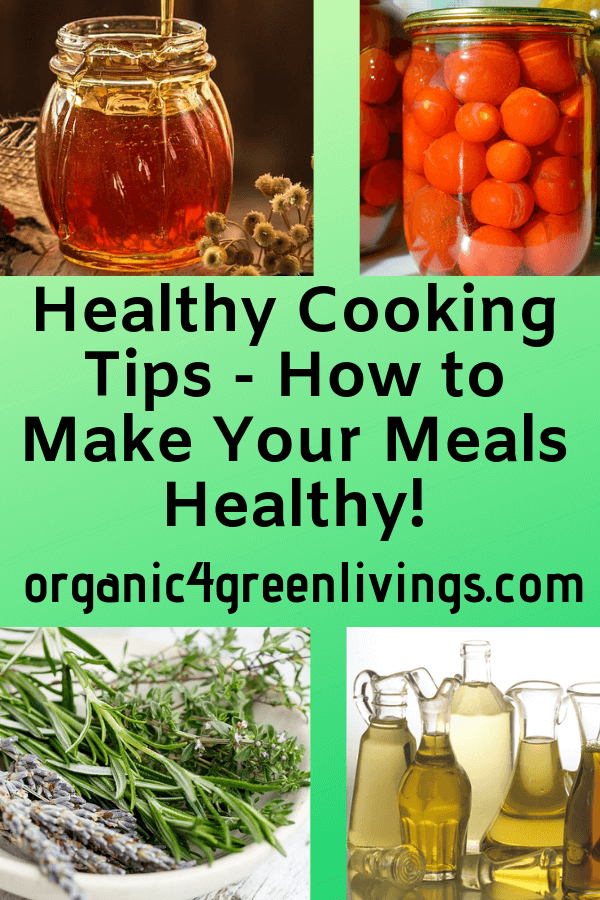
Is Cooking at Home Healthier?
Though everyone practically believes this to be the truth, it always depends on the type of food that we cook. There is no difference between eating at a fast food chain and cooking processed and frozen foods at home. There is also very little difference in cooking at a high-end restaurant and cooking at home using the same type of food and cooking method.
Healthy eating is never about where you eat your food but rather what you eat that matters. The only difference in cooking food at home is the fact that you know what you put in your food and you have full-control over the food that you are eating. In conclusion, the answer is definitely no. Cooking at home is not necessarily healthier than the food you eat elsewhere.
How Can I Make My Food Healthier?
It all boils down to self-control. No person would ever grow obese or end up having diabetes if one knows how to show self-control. Being mindful of what we eat rather than caring about how well food tastes like would make a whole lot of difference when it comes to having a healthier diet.

1. Regulating the Sodium
Salt is one of the major culprits in turning a healthy meal into the devil’s advocate. Grabbing hold of your salt shaker is one of the main things you should start to limit.
Here’s how:
- Cook meals with less salt by using stronger spices and herbs for an extra punch of flavor. Herbs are not only healthy they also add pizzazz to your meals. When you are sauteing, add a herb (rosemary, basil, thyme, and the like) while you are browning your garlic and onions. The herbs will add an earthy yet fresher taste to your meals.a. Use less salt in your marinade. When we are marinating meat, we have this tendency to put extra salt. Unfortunately, salt is the first thing that is absorbed by the meat.
To marinade effectively:
- A. Use less salt in your marinade. When we are marinating meat, we have this tendency to put extra salt. Unfortunately, salt is the first thing that is absorbed by the meat.
- B. Rub salt on the meat and leave it for 5 minute to draw a little bit of moisture out.
- C. Wash the meat.
- D. Add marinade on your meat (with half the amount of salt)E. Leave your meat to marinade
- F. Create a brine or a salt wash (mix one tablespoon of salt to 1 cup of warm water)
- G. Cook your meat normally.
- H. When your meat is halfway done, get a brush and lightly brush the brine on both sides of your meat.
- I. Continue cooking as normal and serve.
Use healthier salt. I would never recommend anyone to use table salt in any way. It is salt the is processed which stripped of all its natural qualities and even contains additives to make the salt look white and pristine. Sea salt compared to table salt is much healthier. Other healthier types of salts are rock salt and pink himalayan salt. These salts are naturally obtained and are packed with minerals.
NOTE: These salt are healthy to some extent. When exposed to high temperatures, the minerals also die out. The best time to add these salts would be a few minutes before taking your food off the pan.
-
- Cook with half the amount of salt. Cutting down on your salt is healthier than cutting down on carbs. Sure it would taste a bit bland but your taste buds will adjust to it.
- Cook with various tastes. Most people are used to three types of flavors: sweet, salty, and savory. Experimenting with other tastes like tangy, sour, and a touch of bitterness to your food will surely help your taste buds re-adjust and get familiar with various tastes.

2. Satisfying the Sweet Tooth
Sugar is one of the most dangerous things we put into our mouths since it is not a natural chemical. It is only derived from other naturally sweet substances or food like sugarcane. Sugar is ultimately a product of a long process of cleaning and ‘purifying’ which involves dangerous chemicals like formalin.
Yes, you heard me. Formalin is a chemical that is used in embalming dead bodies. And the whiter and brighter your sugar is, the more formalin is used to purify and disinfect the sugar. So, how can you satisfy your sweet tooth in a healthier way?
Check these out:
Use Sugar Alternatives
Sugar is pretty hard to remove from one’s diet but there are a lot of alternatives for this.
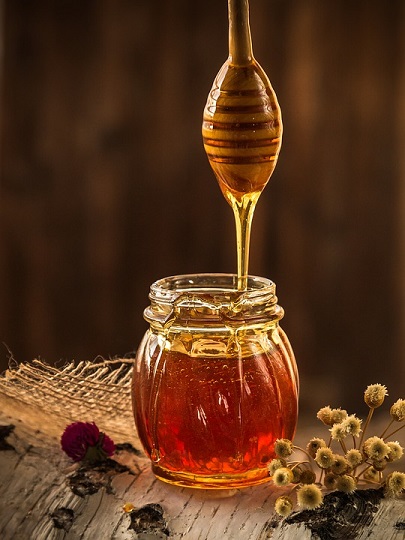
- Honey. This is one of the world’s healthiest and purest sweet foods. Adding pure honey into your cooking doesn’t just make your food sweeter, it also adds unique hints of earthiness to your food. NOTE: Honey should only be given to kids aged 2 and up. Honey contains a bacterium called clostridium botulinum. Adults can easily digest this but the immature gastrointestinal tract of babies cannot. It may lead to a rare kind of food poisoning called botulism. Click here for more information on honey and babies.
- Maple syrup. Maple syrup is taken from the sweet sap of maple trees. It is more expensive than sugar but it is rich in vitamins and minerals such as calcium, potassium, and is also packed with antioxidants. The health benefits of maple syrup outweighs the cost of buying one.
NOTE: Always check the nutritional facts and the ingredients of your maple syrup. Some brands use maple-flavored corn syrup. Always make sure the label says pure maple syrup instead of maple-flavored syrup. Corn syrup is also processed sugar that is dangerous to the health. - Applesauce. Applesauce is one of the best sugar alternatives available in the market. You are literally reducing your sugar intake to at least 33% and even add more fiber to your diet. On the plus side, you can also make your own applesauce at home. NOTE: You can use applesauce as an egg substitute in cooking and baking. One tablespoon of applesauce is equivalent to one medium-sized egg. It helps add volume and helps retain moisture in your food.
- Stevia. This is a plant that has a naturally sweet taste. Eating the leaves alone will surprise you. However, the sweetness disappears when cooking in high temperatures. This is the best friend of people with diabetes since it is also a plant that helps regulate blood sugar.
- Coconut palm sugar. Though it is more expensive and has a warm coconut flavor to it, it is a great alternative for sugar. It has a mild sweet flavor that you will find great in your cooking.
NOTE: Do not cook coconut palm sugar for more than 3 minutes. Long exposure to heat will burn off the minerals found in it. It’s great to sprinkle it on your oatmeal or on your waffles and pancakes in the morning instead.

3. Slowing down on the BAD Fats
Knowing which fats are good for and which ones aren’t is a great way of literally finding out which ones to avoid. Examples of good fats are: monosaturated fats and polysaturated fats. These are fats found in fish, fruits, and vegetables (see more on good and bad fats).
What are the bad fats?
There are two types of fats that are bad for the health.
- Trans fat. This the type of fat that becomes solid in room temperature like butter, fat from beef and mutton, shortening, and margarine.
- Saturated fats should be used in small quantities like high-fat dairy food products, palm oil, coconut oil, and lard.
Oily Habits for the Health
We can’t help but cook with oil especially when making fry-ups or when we saute. But to make our meals healthier, here are some tips that will help you in maximizing the benefits that you can get from oil.
- Never cook unrefined oils. Unrefined oils are cold-pressed and were only filtered to remove large particles. They are healthiest as they are and if they are exposed to high temperature, the healthy properties will reverse and will cause danger to your body instead.
- Fry with oils with high smoke point. These are oils that do not burn or taste funky even under hot temperature. They are also the type of oil that will only produce toxins after long hours of exposure to heat. Some examples of high smoke point oils are:
*Avocado oil
*Canola oil
*Sunflower oil
*Sesame oil
*Peanut oil
*Safflower oil
- Never reuse oil. Once you have used oil once, throw it away. Recooking oil will change its constitution which will be dangerous to your health. Reusing cooking oil will make the oil carcinogenic.
- Don’t wait for the oil to reach its smoking point when cooking. When oil reaches its smoke point, it starts to breakdown. When it breaks down, it starts to create free radicals.
- Store your oil in a jar in a cool dry place. Though most oils are sold in plastic containers, transferring them in clean jars is advised. When exposed to heat (sunlight or heat from being too close to the stove), plastic undergoes a chemical reaction releasing its toxins to the oil it contains.
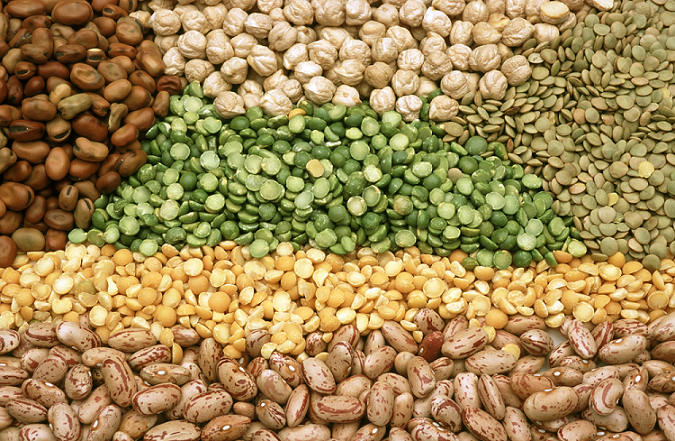
4. Meat Is Not the Only Protein Available
Though meat is the primary source of protein, relying too much on meat can be devastating to your health especially if you are eating huge portions of it in every meal. Replacing meat with other protein rich food like legumes, eggs, dairy products, nuts and seeds are great alternatives that are enough to fulfill your body’s needs for protein.
What are the best types of meat to cook with?
Meat is one of the best luxuries of eating. But it is also one of the leading causes of having an improper diet. As good as it tastes, picking out which meat is best to cook with for the best health benefits is also one thing you and I should be very mindful of.
The best parts of any animal to cook with are:
- Fish (preferably seafood) and shellfish
- Pure skinless poultry meat (chicken, turkey and the like)
- Lean beef (90% lean beef meat)
- Mutton trimmed meat
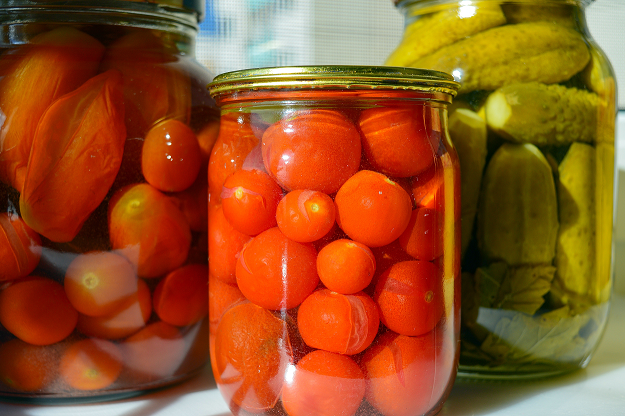
5. Making Your Own Processed Food
You can make your own canned food or food preserves right in your own kitchen. If you get lazy in prepping a whole meal but still want to make it savory and healthy, marinade your meat in spices with less salt and pack them tightly in ziploc bags.
You can also start by preserving yams and fruits and pickling veggies.
Pickled foods have tons of benefits that we often ignore like:
- Good source of beneficial bacteria called probiotics
- Low in calorie meals
- Improves digestion
- Helps prevent obesity
- Contains massive amounts of antioxidants
You can pickle many types of vegetables. A great example is Korean cuisine. They have multiple pickled food. They enjoy fermented food, making their diet very well-balanced. Some of their best known fermented foods are kimchi, kkakdugi, and raw fermented seafood. They also have an assortment of pickled food like yellow pickled radish and more.
6. Frying Is Not the Only Cooking Method
It may be our favorite method of cooking but it is the least healthy way of cooking. Mastering other means of cooking is a better option in maintaining a healthier diet.
A healthier diet involves other cooking methods like:
- Steaming. Steaming fish rather than frying it would retain most of the minerals you can get from it. It also goes the same with vegetables. Some bakers nowadays use steaming as a process of making bread instead of baking in the oven.
- Baking or oven-roasting. Try baking potato chips and french fries rather than deep frying them.
Baking. Baked goods are not just healthy, they are delicious. - Grilling. Cooking on open fire means less grease. This is as natural as cooking can get.
- Boiling and blanching. One of the healthiest ways of cooking vegetables is blanching. When you blanch, only about 10% of the nutrients from your vegetables are stripped off as opposed to other cooking methods that strip about half the nutrients from the vegetables.
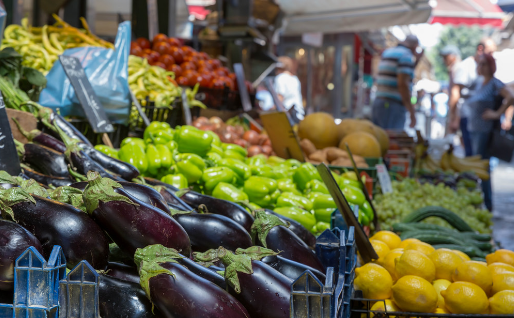
7. Cooking Starts with the Ingredients
One of the best healthy cooking tips I can give you starts with shopping for healthy food. There are healthier options in the supermarket like getting your veggies from the organic section. But just because they are labeled as organic doesn’t mean you should stop there. You should pick out veggies that are fresh and that are labeled as non-GMO, or not genetically modified organisms. Most of the food we eat are products of genetic modification. This means they are made and designed to be bigger and look better.
If I were you, I’ll shop in the farmer’s market where I can directly communicate with the farmers who pare planting and selling the vegetables. The best signs of good crown crops would be signs of insect and worm bites. It means that there are little to no pesticides and chemicals used on the products.
8. Using Your Cookware Properly
Healthy cooking also involves the proper use of the tools and equipment you use in cooking and that involves some of the most vital items you use in the kitchen, your cookware. Choosing the right cookware is also just as vital as properly using them. That’s because your cookware is directly touching your food. Here are the following reasons why choosing the right equipment is vital in cooking:
- Buying quality cookware helps retain the integrity of your food
- Using the wrong kind of cookware will affect the constitution of your food
- Some cookware are made with dangerous substances such as Teflon
- Cheap cookware can react with your food altering the taste
- Low-quality cookware would have hotspots preventing you from cooking your food equally.
How can cookware help in making your meals healthy? Practicing the proper care of your equipment is tantamount to keeping your food healthier.
Here are ways how:
- Never use a metal utensil in cooking with non-stick pans. The non-stick lining is just a simple coating on hard anodized aluminum. Scratching the lining makes the food come in contact with either the aluminum or expose the chemicals used in the non-stick coating of your food. Always use wooden spoons in cooking in non-stick pans.
- Never store food in your pots and pans. Leaving food on your pots and pans can cause a chemical reaction especially when you are using reactive pans. Reactive pots and pans include any cookware made of metal, especially cast iron. When your food cools down, some of the minerals in your food break down (especially protein), these may react to metals thus releasing dangerous carcinogenic chemicals on your food. Always store leftover food in tightly sealed containers.
- Heat your pans first before cooking. If you don’t, you will ruin both your food and your cookware.
- Plastic spoons utensils are not for cooking. Plastics melt, they contain chemicals that are dangerous to the health. In addition, when plastics melt, they leave residue behind (either on your food or on the pot or pan you are using.
Cooking Mistakes We Should Avoid
No matter how much time we spend in the kitchen, there are still kitchen practices we do that end up making our food unhealthy. How is that? Well, think about it, eating habits aren’t the only things that affect our diet. Even if we do cook healthy food, if we cook them incorrectly, then we won’t be able to reap the health benefits from these foods. In fact, we might end up reversing the chemical structure of the food we are eating and end up concocting a recipe that is dangerous to our health.
Check out these unhealthy kitchen practices:
1. Reheating Certain Foods
One of the most surprising things I came to find out is that there are certain foods that should never be reheated after being cooked. You are better off eating them cold and stale or simply throw them out if you know you aren’t going to eat it afterward.
These foods are:
- Chicken. Chicken protein breaks down as your food cools and eventually when you put it in the refrigerator. Heating it again may cause digestive problems both temporary or even chronic digestive disturbances. If you are reheating it, don’t use a microwave. Put it back in a pot and heat it on the stove until it gets steaming hot.

- Mushroom and eggs. They also contain protein that breakdown as it cools down. It’s best never to have any mushrooms or eggs on your leftovers. When the protein in these foods deteriorates, it produces toxins that will cause an upset stomach.
- Spinach and celery. These veggies are packed with vitamins and minerals but as the temperature cools, the vitamins and minerals breakdown. This isn’t necessarily harmful to the body but when you reheat these veggies, the veggies produce carcinogenic properties.
- Potatoes. Once you make mashed potatoes or french fries, as much as possible eat them all up. If there happen to be some leftovers, put them in a clean and sealed container and store them inside the refrigerator. To reheat, just pop it in the microwave. Once you leave cooked potatoes in room temperature, bacteria called Clostridium botulinum will breed in the potatoes causing a dangerous type of food poisoning called botulism.
2. Not Heating Your Pan Enough Before Cooking
Being impatient can be a horrible thing when it comes to cooking. Once you put your meat or whatever it is you are going to fry in the pan, you will end up having horribly cooked food. Chances are, the food will stick to the surface of the pan (yes, even if you seasoned it) and burn the meat. Burnt meat is never a good thing for your health since burnt meat can be sources of carcinogens.
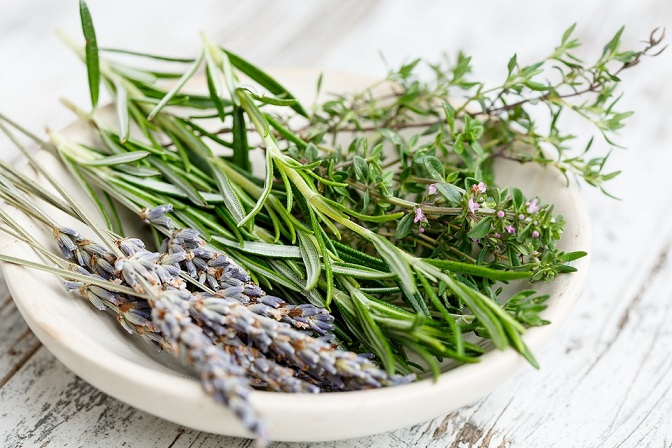
3. Cooking with Dry Herbs
Dried herbs have a reduced and altered taste as compared to the fresh ones. Although dried herbs are fine, they are also breeding grounds for mold and spores which may cause digestive problems if stored improperly. To prevent getting a bad stomach from these microorganisms, it’s best to opt for freshly picked herbs. Herbs are pretty easy to grow in your kitchen.
4. Pre-cooking Meat Care
Washing your meat before cooking is not that advisable. You can simply wipe the meat with a paper towel to remove the excess moisture from being refrigerated. But remember, let the meat thaw out completely before cooking it. Cooking frozen food will surely cause the meat to draw out most of its moisture making it dry and cook unevenly. Unevenly cooked food is not good for the health since you may have parts of the meat that aren’t cooked well enough to kill the bacteria that have probably bred in the meat.
The Final Takeaway
When it comes to healthier cooking the main ingredient here is you: the cook. Self-control in choosing the right type of food and practicing a healthier cooking is the best way to live a healthier lifestyle. These healthy cooking tips on how to make your meals healthy are things that you need to know to maintain a more nutritious diet and keep good and wholesome eating habits.
Author Bio: EL Mehdi is the founder of Desired Cuisine and a simple food enthusiast who was born and raised in Morocco. Growing up in a country that is full of herbs, spices and various types of delicious food, he decided to pursue different types of food and recipes around the world.

Pingback: 3 Remedies to Cure All Digestion Problems at Home